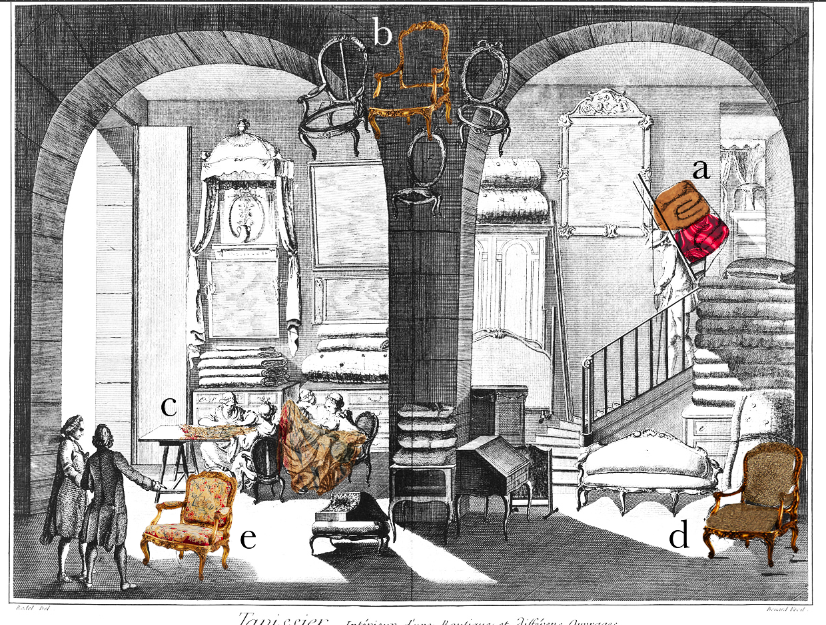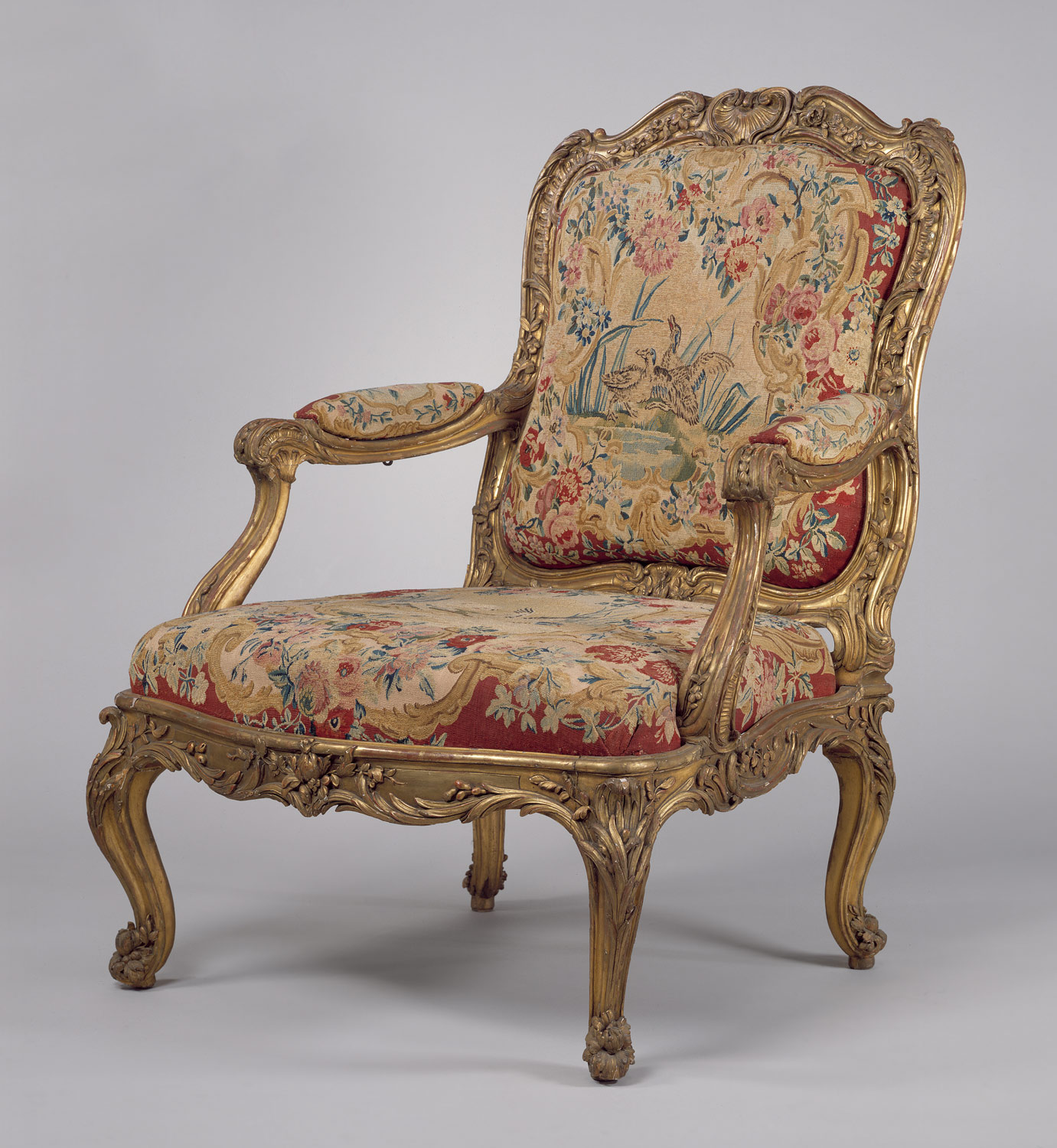(a) The Fabric (b) The Frame (c) Tapestry (d) Upholstery (e) The Final Product

“Tapissier, plate 1, page 26:12:1,” adapted from Encyclopédie, ou dictionnaire raisonné des sciences, des arts et des métiers, etc., eds. Denis Diderot and Jean le Rond D’Alembert. University of Chicago: ARTFL Encyclopédie Project (Spring 2011 Edition), Robert Morrissey (ed), http://encyclopedie.uchicago.edu/. Photoshopped by Edra Stafaj, November 30, 2016, for A Virtual Enlightenment website, using photo of Armchair (fauteuil à la reine) from Metropolitan Museum of Art, New York (66.60.2).
On display at the MET, the fauteuil à la reine armchair (shown below) is presented as a singular work of art. Every inch of sculpture, tapestry, and gild come perfectly together to form a unified piece of furniture. Struck by its sheer perfection, one cannot help but wonder: How was this armchair made? The answer to this question calls for a bold move: to digitally deconstruct the materially constructed chair.
In order to understand the complete furniture piece, it is necessary to work backwards, to see it is pieces and fragments in the process of creation. Hellman notes that in 18th century France, “a single object was the sum of numerous individuals’ contributions.”[1] Due to the high level of specialization, artisans were permitted to only make parts of things.[2]
In effect, menuisiers and ébénistes had to work with designers, carvers, gilders, and upholsterers to complete their furniture.[3] As Diderot details in the Tapissier plate of Encyclopédie, the chair went through many forms as it traveled through the hands of different artisans. To get to the final product (e), the fabric had to be selected (a), the frame had to be carved (b), the tapestry woven (c), and the chair upholstered (d).
By combining the technology of the past, namely Diderot’s Encyclopédie plate, with that of the present, the photoshopped fauteuil à la reine armchair, it is possible to situate the existing object into its appropriate historical context. So discover what it took to make the fauteuil à la reine armchair! Click on a colored part of the plate above to learn more about the collective process required to make this masterpiece of a chair!

Armchair (fauteuil à la reine) (part of a set), frame by Nicolas-Quinibert Foliot, probably after a design by Pierre Contant d’Ivry, after designs by Jean-Baptiste Oudry, tapestry woven at Beauvais, ca. 1754-56, Paris. 40 7/8 × 29 × 26 in. Carved and gilded beech; wool and silk tapestry. Photo: Metropolitan Museum of Art, New York (66.60.2).
[1] Hellman, Mimi. “Furniture, Sociability, and the Work of Leisure in Eighteenth-Century France.” In Eighteenth-Century Studies, Vol. 32, No. 4, Sites and Margins of the Public Sphere, *Summer, 1999), pp 418
[2] Mimi, “Furniture, Sociability, and the Work of Leisure in Eighteenth-Century France,” 418.
[3] Kisluk-Grosheide, Daniëlle O. “French Furniture in the Eighteenth Century: Seat Furniture.” In Heilbrunn Timeline of Art History. New York: The Metropolitan Museum of Art, 2000–. http://www.metmuseum.org/toah/hd/sfurn/hd_sfurn.htm (October 2003)